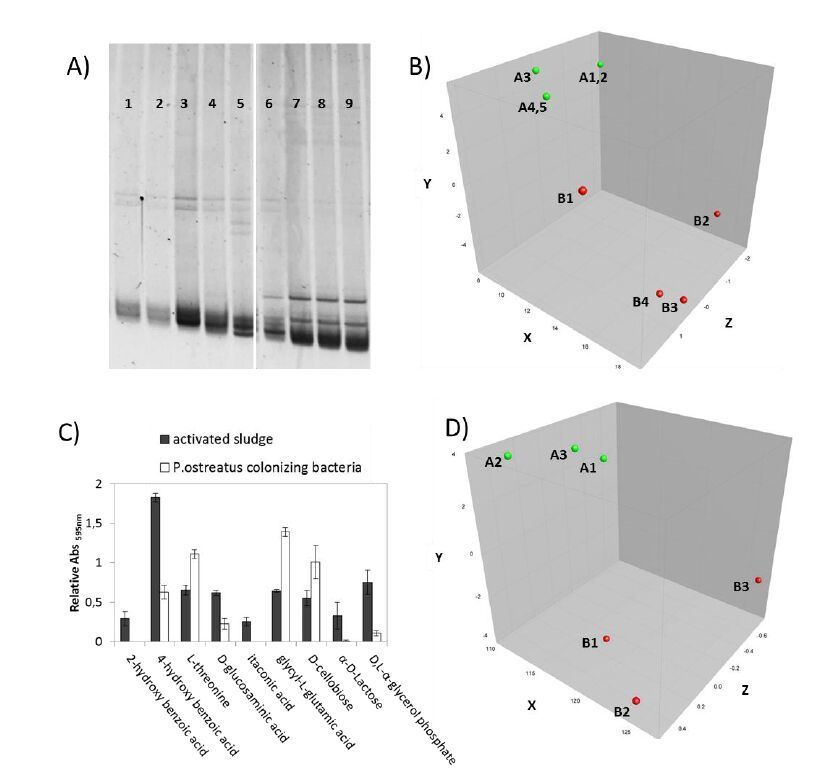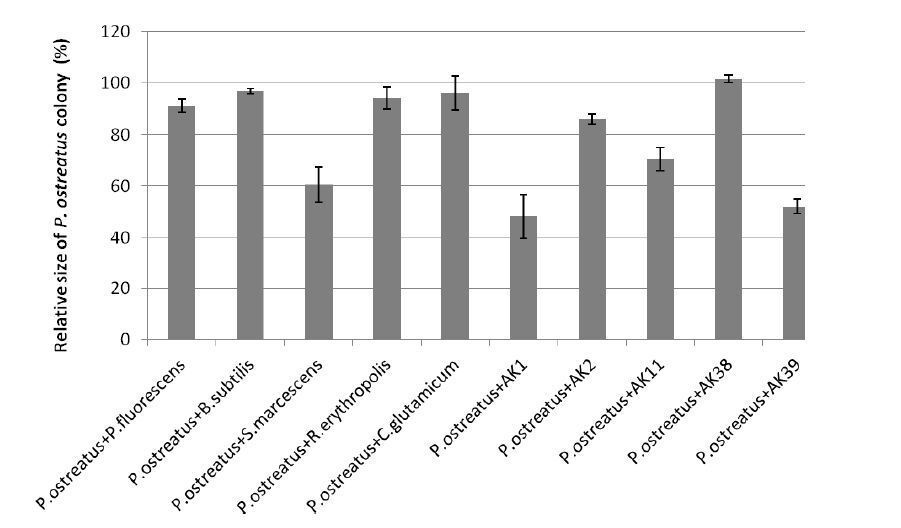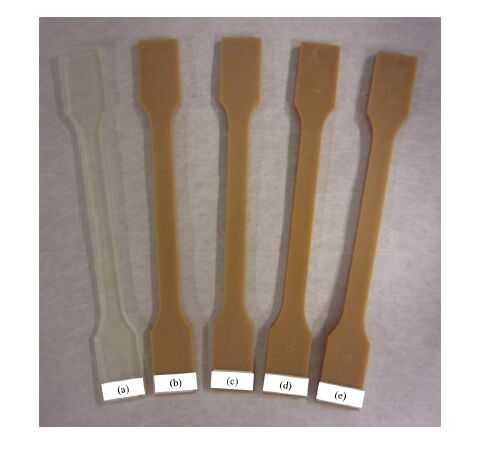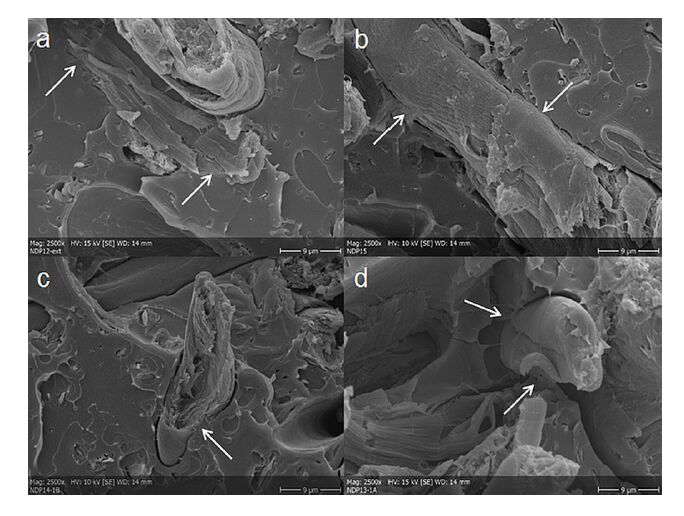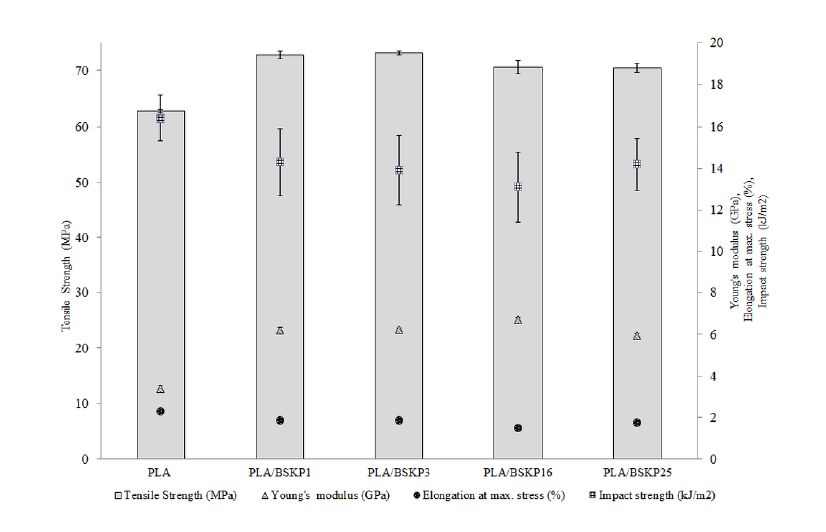Abbreviations
PAHs: polycyclic aromatic hydrocarbons;
WWTP: wastewater treatment plant;
MEG: malt-extract glucose medium;
PDA: potato dextrose agar;
SWW: synthetic wastewater;
PUF: polyurethane foam;
ABTS: 2, 2'-azino-bis(3-ethylbenzothiazoline-6-sulphonic acid);
RBBR: Remazol Brilliant Blue R;
DGGE: denaturing gradient gel electrophoresis;
MALDI-TOF: matrix-assisted laser desorption/ionization-time of flight.
1. Introduction
Biodegradation potential of white rot fungi was well established in previous two decades and various bioreactors based on fungal degradative power have recently been tested for biodegradation of persistent organic pollutants including synthetic dyes, chlorinated compounds, PAHs, polybrominated flame retardants, or various pharmaceutics [1,2,3,4,5]. Most of those studies were carried out under aseptic conditions in the laboratory and thus the fungal performance under non-sterile conditions is still poorly understood. Better knowledge of fungal behavior in the conditions of bacterial stress is needed to advance the application of fungal reactors in wastewater treatment process.
Several recent studies investigated the effect of exogenous competing microorganisms on biodegradation performance of fungal cultures in bioreactors. Trametes versicolor was shown to efficiently degrade pharmaceuticals under non-sterile conditions in an urban wastewater [6]. Trametes pubescens MUT 2400 was successfully used in combination with activated sludge for the treatment of textile wastewaters [7]. However, the biodegradation capacity of fungal bioreactor cultures can be negatively affected by contaminating microorganisms originating from wastewater [8,9]. Lu et al. [10] studied the diversity of contaminating fungi in reactors with Phanerochaete chrysosporium during the degradation process. Variations of the invading fungal community were correlated with the changes of the dye decolorization capacity observed. Unfortunately, those studies only demonstrated the resulting changes in the biodegradation efficiency without providing information on the mechanisms involved in mutual interactions of the microorganisms.
In the soil environment, it was shown that various bacteria can recognize a number of fungal species in different morphological states, including hyphae, spores and fruiting bodies (reviewed in Hogan et al. [11]). Cho et al. [12] demonstrated that bacterial communities that colonized Pleurotus ostreatus mycelium growing on the solid substrate significantly differed in the composition and numbers of the individual bacterial species in dependence on the developmental stage of the fungus, thus indicating that the age of the fungus can play a key role in the interspecific interactions of P. ostreatus.
This work focused on the effect of bacterial stress on the biodegradation capacity of P. ostreatus and on characterization of the bacterial population spontaneously colonizing P. ostreatus mycelium in a trickle-bed reactor that was operated under a flow of a suspension of activated sludge bacteria suspended in the simulated wastewater (SWW). The results clearly demonstrated differences between the phenotype and genotyping profiles of the mycelium-colonizing, bacterial populations and of the original activated-sludge populations.
2. Material and methods
2.1. Microorganisms
The fungal strain P. ostreatus 3004 CCBAS 692 was obtained from the Culture Collection of Basidiomycetes of the Institute of Microbiology (CAS, Prague, Czech Republic). It was maintained on agar plates with MEG medium (5 g·L−1 malt extract, 10 g·L−1 glucose and 2 g·L−1 agar) and stored at 4 °C. The activated sludge was collected from a municipal wastewater treatment plant (WWTP, Central Bohemia, Czech Republic). It was aerated and stored at 4 °C up to one week until its use. The isolated bacterial strains were stored in 300 g·L−1 glycerol at −80 °C. Bacterial strains Escherichia coli CCM3988, Citrobacter koseri CCM2535, Rhodococcus erythropolis CCM2595, Serratia marcescens subsp. marcescens CCM303, Corynebacterium glutamicum CCM2428 (type strain ATCC13032), Pseudomonas fluorescens CCM2115, Pseudomonas aeruginosa CCM1960, and Bacillus subtilis subsp. spizizenⅡ CCM1999 were obtained from the Czech Collection of Microorganisms, Masaryk University (Brno, Czech Republic) and were stored in 300 g·L−1 glycerol at −80 °C.
2.2. Trickle-bed reactors
P. ostreatuswas grown in semi-solid-state cultures on 1-cm3 cubes of polyurethane foam (PUF). The cultures (1.5 g of PUF in 50 mL of MEG medium) were inoculated with 10 agar plugs from stock fungal plates and incubated at 30 °C for 12 days. To assemble a reactor, the immobilized fungal mycelium was transferred into a sterilized reactor vessel (glass cylinder, volume 150 mL). Filter-sterilized (0.2 µm) air was delivered to the bottom of the reactor vessel using an aquarium aeration device. The reactor was operated for 24 h at 25 °C using a flow of 3 mL·min−1 of sterile SWW containing activated sludge bacteria (6 × 104 CFU·mL−1). SWW consisted of 2.5 g NaCl, 0.2 g glucose, 1.4 g KH2PO4, 0.53 g NH4Cl in 1 L of distilled water, pH 7.6. The activated sludge bacteria collected in WWTP were centrifuged (5000 g, 20 min, 4 °C), washed with a sterile saline solution and suspended in sterile SWW. Control reactor cultures were grown in SWW without the addition of bacteria.
2.3. Dye decolorization in reactors
Reactors filled with P. ostreatus mycelium were first operated for 2 h under a flow (3 mL·min−1) of SWW containing activated sludge bacteria. After the first phase when the fungal reactor was exposed to the activated sludge bacteria, the SWW containing the activated sludge bacteria was replaced with a volume of 300 mL SWW without the bacteria but containing 100 mg·L−1 of Remazol Brilliant Blue R (RBBR, Sigma-Aldrich, Germany) and the reactor was further operated in a circulation mode under a flow of 3 mL·min−1. SWW aliquots (0.5 mL) were collected, centrifuged (1min, 10,000 g) and the absorbance was measured at 592 nm. All incubations were carried out at 25 °C and in triplicates. In the control reactors no bacteria were added.
2.4. Growth inhibition in agar cultures
Growth inhibition was determined using a dual culture technique by measuring colony growth when the fungus and the bacterium were inoculated opposite to each other on various solid media [13]. Two different modifications of the dual culture technique were used. One technique (cf.Table 2) measured growth inhibition as the width of the inhibition zone between the fungal and bacterial colonies at the time when the growth spontaneously terminated (0, fungal and bacterial colonies overlapped; I, 1-3 mm; Ⅱ, 4-7 mm; Ⅲ, ≥8 mm), in this case the fungus and the bacterium were inoculated on the agar at the same time. The other technique (cf. Figure 2) determined the growth inhibition by measuring the diameter of the fungal colony on Day 6 after inoculation of the fungus. In this case the bacterium was inoculated on the agar opposite the fungus 48 h after the inoculation of the fungus allowing thus the fungus to resume growth on the agar before the bacterium was inoculated.
Using both techniques the agar plates were inoculated in triplicates with a mycelium-covered disc (diameter 0.9 cm) of a 7-d-old MEG fungal culture and with four 10 µL drops of a bacterial culture (1010 CFU·mL−1) placed 1-1.5 cm from the agar plate edge. The bacterial inoculum culture was grown overnight (170 rpm, 30 °C) in Lab Lamco beef extract medium pH 7 or in B1 peptone medium (10 g·L−1 peptic digest of animal tissue, 10 g·L−1 beef extract, and 5 g·L−1 NaCl); the cells were counted by plating. The plates with the fungus and bacteria were incubated at 28 °C and the growth inhibition was measured. Four different agar media were used at pH values of 4.5, 5, 6 and 7 (agar 20 g·L−1): MEG, PDA (39 g·L−1), LB (tryptone 10 g·L−1, yeast extract 5 g·L−1, NaCl 10 g·L−1), 2xTY (tryptone 16 g·L−1, yeast extract 10 g·L−1, NaCl 5 g·L−1).
2.5. Enzyme activity determination
Laccase activity was measured by the oxidation of ABTS [14]. Manganese peroxidase was assayed with 2, 6-dimethoxyphenol [15]. The enzyme activities were expressed in units of the enzyme activity (U; 1 unit oxidized 1 µmol of substrate per minute). Laccase associated with fungal mycelium was measured as described by Svobodová et al. [16]. One PUF cube colonized by the fungal mycelium was removed as a sample and the enzyme activity measured was expressed in mU of enzyme activity per one PUF cube.
2.6. CFU determination
At the end of cultivation PUF cubes colonized by fungal mycelium were removed from the reactor vessel and incubated in a volume of 15 mL of SWW on a shaker for 10 min. Then the PUF material was squeezed with sterile tweezers and the SWW containing bacteria was collected. Samples of SWW were serially diluted with sterile saline solution. A volume of 50 µL of the dilutions were plated on B1 peptone containing 1.5% agar and cultivated at 30 °C. After 24 h the bacterial colonies were counted and the CFU concentrations calculated.
2.7. Isolation and identification of bacterial strains
Individual bacterial strains associated with the fungal mycelium were isolated by plating on B1 peptone agar plates and identified by MALDI-TOF mass spectrometry as described by Altun et al. [17]. The species classification was performed by comparing the individual peak lists to the database under control of the MALDI Biotyper program.
2.8. Biolog EcoPlate assays
Physiological profiles of the bacterial communities were assayed with Biolog EcoPlates (Biolog, Inc., USA) following the protocols of the manufacturer and the principles given by Garland and Mills [18]. The bacteria from the activated sludge and the bacteria extracted from the reactor cultures were collected by centrifugation (5000 g, 20 min, 4 °C), washed twice with sterile saline solution and suspended in a volume of saline solution to obtain a final bacterial concentration of OD600nm = 0.3. A volume of 150 μL of the bacterial suspension was pipetted to each well in a Biolog EcoPlate. The plates were incubated at 30 °C for 24 h and then the absorbance was recorded at 595 nm. The collected absorbance values were subjected to PCA analysis using BioNumerics v5.00 (Applied Maths).
2.9. DNA extraction, PCR and DGGE analyses
DNA was extracted from the pelleted bacterial cells according to Stach et al. [19]. Bacterial rDNA was amplified using 1378R and gc984F primers [20] and 50-100 ng of DNA. PCR cycling conditions were 95 °C for 2 min, followed by six cycles of 95 °C for 45 s, 68-63 °C for 30 s, and 72 °C for 1 min, 30 cycles of 95 °C for 45 s, 55 °C for 30 s, and 72 °C for 1 min, and a final extension step of 72 °C for 20 min.
DGGE analysis of the PCR products was performed with gels containing 8% (w/v) polyacrylamide (37.5:1 acrylamide/bis-acrylamide) with a denaturing gradient of 40-60%. The 100% denaturant corresponded to 7M urea and 40% (v/v) formamide. The electrophoresis was run for 17 h at 85 V and 60 °C in 0.5x TAE buffer. The gels were stained with ethidium bromide and the DGGE band profiles were analyzed by BioNumerics v5.00 (Applied Maths) with the band assignment criteria set to 5% minimum profiling and 2% minimum peak area, relative to the max value of each lane. The resulting band profiles were subjected to PCA analyses performed using the BioNumerics v5.00 software.
3. Results and discussion
3.1. Characterization of microbial communities in trickle-bed reactors
P. ostreatus strains are often used in biodegradation studies that explore fungal degradation power in different applications (e.g. [21,22,23]). However, the advancement of application of fungal cultures in bioremediation of contaminated wastewater requires better understanding of their performance and behavior in non-sterile conditions. In this work, a freshly-grown, P. ostreatus mycelium immobilized on PUF in a trickle-bed reactor was exposed to a flow of activated sludge organisms suspended in SWW for 24 h (Table 1, Experiment 1). Before use, the activated sludge removed from WWTP was separated from the activated sludge liquid, washed with saline solution and suspended in sterile SSW to avoid the effects of nutrients and compounds present in the original activated sludge on the activated sludge/fungus interactions. During the period of exposure in the reactor a 44% drop of the fungal laccase activity was observed (cf. Table 1, Experiment 1). Up to 54.5 ± 37.9 U/L of the laccase activity was eluted from the reactor. No MnP activity was detected in the culture. At the end of the experiment after 24 h, an amount of 2.67E + 08 of bacteria per mL of the extracting SWW was found to be associated with the reactor PUF carrier (total initial dry mass 1.5 g) after extraction with a total volume of 15 mL SWW. The decrease in laccase activity of the fungus in SWW and the amount of bacteria invading the fungal mycelium were similar to those observed previously in batch cultures of the same fungus [24].
Table 1.Microbial and biochemical characteristics of the reactor under conditions of bacterial stress
|
|
Experiment 1—bacterial counts and laccase activityafter 24h-exposure to activated sludge
|
Experiment 2—bacterial counts after 24h-exposure to activated sludge and RBBR
|
| Time
|
Laccase activity associated withfungal mycelium
|
Laccase activity at the reactor outlet
|
Bacteria detected in PUF carrier
|
Bacteria detected in PUF carrier
|
|
(h)
|
(mU per PUF cube)
|
(U·L−1)
|
(CFU·mL−1)
|
(CFU·mL−1)
|
|
P. ostreatus
|
|
|
0
|
75.2 ± 10.1
38.9 ± 3.7
|
13.1 ± 3.7
2.89 ± 0.5
|
nd
|
nd
|
|
24
|
nd
|
nd
|
|
P. ostreatus + activated sludge
|
|
|
0
|
75.2 ± 10.1
33.4 ± 5.4
|
8.4 ± 0.2
54.5 ± 37.9
|
nd
|
nd
|
|
24
|
2.67E + 08
|
1.44E + 08
|
| Not determined: nd. |
The bacterial population of activated sludge and the bacteria collected from P. ostreatus cultures after a 24h-exposure to activated sludge were subjected to the analysis of the bacterial community structure using DGGE analyses. Amplicons of bacterial 16S rDNA (ca 500bp) were separated using DGGE (Figure 1A) and the obtained DGGE profiles were subjected to PCA analyses (Figure 1B). In the lower part of the profile of the activated sludge bacteria, a diffuse band pattern appeared which may occur when complex microbial communities comprise numerous populations in relatively equivalent proportions [25]. Nevertheless, some bands started to become more prominent in this part of the profile in the case of the bacterial population colonizing the fungal mycelium, thus reflecting the ongoing selection process. Similarly, the PCA analysis (Figure 1B) revealed a substantial alteration of the structure of the bacterial community during the process of colonization with respect to the original bacterial population. The samples of bacteria colonizing P. ostreatus mycelium had lower y-coordinates (explaining 21.2% of data variance) and higher x-coordinates (explaining 64.5% of data variance) than the samples of the bacteria of the original activated sludge.
The individual bacterial populations were also compared with respect to their ability to utilize various C-sources using Biolog EcoPlate assays. The bacteria colonizing fungal mycelium showed a lower ability to utilize 2-hydroxy benzoic acid, 4-hydroxy benzoic acid, D-glucosaminic acid, itaconic acid, alpha-D-lactose, and D, L-alpha-glycerol phosphate. On the contrary, they displayed a higher ability to utilize D-cellobiose, glycyl-L-glutamic acid, and L-threonine as C-sources (Figure 1C). Similar to the PCA analyses of the DGGE band patterns (Figure 1A), the PCA analyses of the bacterial phenotype profiles clearly distinguished the two bacterial populations (Figure 1D). The samples of the bacteria colonizing P. ostreatus mycelium had lower y-coordinates (explaining 2.8% of data variance) and higher x-coordinates (explaining 96.5% of data variance).
The selection of bacteria during the colonization of P. ostreatus mycelium could be driven by the composition of fungal extracellular polysaccharides which show a high variability [26], and could thus reflect the necessity of the presence of corresponding enzyme activities enabling the bacteria to utilize those fungal polysaccharides. The complexity of the substrate was hypothesized to affect the way how bacteria interact by promoting positive interactions, synergistic growth and metabolic activity in bacterial populations in contrast to the situation when glucose was used as the C-source [27]. Our results suggested competition among the bacteria of activated sludge leading to selective colonization of fungal mycelia (Figure 1).
P.ostreatus cultures exposed to the activated sludge bacteria for 2 h were tested for decolorization of RBBR. Under the given conditions the dye decolorization rate reached 40.6±15.1% after a 24h-incubation, which was comparable to the decolorization capacity of the pure fungal cultures (49.8 ± 5.2%), showing that no significant change of the decolorization capacity occurred after the exposure to the activated sludge. To summarize, no increase in laccase activity and RBBR decolorization was observed in our mixed cultures, compared to the results of Baldrian [28]. In that work, laccase activity produced by P. ostreatus increased significantly after introduction of soil fungi, bacteria and yeast. An increased decolorization of RBBR also occurred in mixed cultures [28].
3.2. Growth inhibition study
General tolerance of P. ostreatus 3004 strain to bacteria was tested by dual culture technique with a selection of ubiquitous bacteria by measuring colony growth when the fungus and the bacterium were inoculated opposite to each other on various solid media (pH 4.5-7), covering the optimal pH for both fungal and bacterial growth [13]. The growth inhibition measured by the formation of an inhibition zone between the fungal and bacterial colonies was found with all the bacteria tested on LB and 2xTY media (Table 2). The result probably reflected the metabolic requirements of the partners necessary for growth inhibition that comprised high levels of peptides and amino acids used as nitrogen source. Tryptone-rich media can promote the production of antifungal compounds in bacteria [29]. Nutrient-level effects were reported when growth inhibition was studied with various soil bacteria and Phanerochaete chrysosporium [13]. The inhibition with P. aeruginosa and B. subtilis was also observed on PDA and MEG media, respectively, irrespective of the pH used (Table 2). The behavior of P. aeruginosa was similar to that of the agricultural soil pseudomonads towards P. chrysosporium described by Radtke et al. [13] where greater antagonism occurred on PDA compared to malt medium. Pseudomonads produce a diverse array of potent antifungal metabolites that include both simple metabolites (phenazin-1-carboxylic acid, pyrrolnitrin, etc.) and complex compounds (e.g. 2, 3-de-epoxy-2, 3-didehydro-rhizoxin) [30]. The antifungal activity of B. subtilis comprises small antibiotic peptides, biosurfactants and fungal wall degrading enzymes. The fact that rich media containing soybean flour used as the nitrogen source support the production of antifungal compounds in B. subtilis [29] is in accordance with the inhibition observed on LB, 2xTY and MEG media (Table 2).
Table 2.Growth inhibition of Pleurotus ostreatus and various bacteria on different agar media at pH 4.5-7. Growth inhibition was expressed as the width of the inhibition zone between fungal and bacterial colonies (0, fungal and bacterial colonies overlapped; I, 1-3 mm; Ⅱ, 4-7 mm; Ⅲ, ≥8 mm), the agar media used were malt extract-glucose agar (MEG), potato dextrose agar (PDA), Luria broth (LB), 2xTY medium
|
|
Growth inhibition
|
| Growth medium
|
MEG
|
PDA
|
LB
|
2x TY
|
| pH
|
4.5
|
5
|
6
|
7
|
4.5
|
5
|
6
|
7
|
4.5
|
5
|
6
|
7
|
4.5
|
5
|
6
|
7
|
|
Escherichia
coli
|
0
|
0
|
0
|
0
|
-
|
0
|
0
|
0
|
I
|
I
|
Ⅱ
|
Ⅲ
|
-
|
Ⅲ
|
Ⅲ
|
Ⅲ
|
|
Citrobacter koseri
|
0
|
0
|
0
|
0
|
-
|
0
|
0
|
0
|
Ⅲ
|
Ⅲ
|
Ⅲ
|
Ⅲ
|
-
|
Ⅲ
|
Ⅲ
|
Ⅲ
|
|
Pseudomonas aeruginosa
|
0
|
0
|
0
|
0
|
-
|
I
|
Ⅱ
|
Ⅲ
|
I
|
Ⅱ
|
Ⅲ
|
Ⅲ
|
-
|
I
|
Ⅲ
|
Ⅲ
|
|
Serratia marcescens
|
0
|
0
|
0
|
0
|
-
|
0
|
0
|
0
|
Ⅲ
|
Ⅲ
|
0
|
0
|
-
|
Ⅲ
|
Ⅲ
|
Ⅲ
|
|
Bacillus
subtilis
|
Ⅰ
|
Ⅱ
|
Ⅱ
|
Ⅱ
|
-
|
0
|
0
|
0
|
Ⅲ
|
Ⅲ
|
Ⅲ
|
Ⅲ
|
-
|
Ⅱ
|
Ⅱ
|
Ⅱ
|
|
Corynebacterium glutamicum
|
0
|
0
|
0
|
0
|
-
|
0
|
0
|
0
|
Ⅲ
|
Ⅲ
|
Ⅲ
|
Ⅲ
|
-
|
Ⅱ
|
Ⅱ
|
Ⅱ
|
|
Rhodococcus erythropolis
|
0
|
0
|
0
|
0
|
-
|
0
|
0
|
0
|
Ⅰ
|
Ⅱ
|
Ⅲ
|
Ⅲ
|
-
|
Ⅲ
|
Ⅲ
|
Ⅲ
|
There are scarce reports on the antimicrobial properties of P. ostreatus [31]. Where no inhibition zones were observed between the partners in our experiments, the bacteria were overgrown with the fungal mycelium after several days. The appearance of the inhibition zones suggested that antifungal compounds were produced by the bacteria that restricted fungal growth. Evidently, P. ostreatus was sensitive to growth inhibition by a number of commonly occurring bacteria, however, this bacterial inhibitory potential could be realized only under rather specific conditions given by nutrient composition of the medium but not the pH value of the medium (cf. Table 2).
MEG agar plates allowing for good growth of both the fungus and the bacteria tested were also used for testing growth inhibition by the strains of the activated sludge bacteria isolated by exposure of the reactor culture of P. ostreatus to the activated sludge flow. Five bacterial strains were isolated from those that colonized P. ostreatus culture and were designated as AK1, AK2, AK11, AK 38, and AK39. They were identified according to their protein profiles acquired by MALDI-TOF mass spectrometry (data not shown). The strains were classified as Pseudomonas chlororaphis, Pseudomonas veronⅡ, Pseudomonas fluorescens, Bacillus cereus, and B. subtilis, respectively. Their growth interactions with P. ostreatus were compared with five bacteria originating from a culture collection that were also included in the previous testing (cf. Table 2).
In this experiment, the dual culture technique was slightly modified by letting the fungus resume the growth on the agar plate in the course of two days before the bacterium was applied. In this case the inhibition zones were not evaluated but the rate of growth of the fungal colony was determined by measuring its diameter on Day 6 after the inoculation. This approach enabled us to monitor the direct effect on fungal growth by eliminating the effect of a delayed onset of the fungal growth compared to the bacterial one. The fungus overgrew the bacterial colonies in all cases except for S. marcescens and P. chlororaphis AK1 strains.
With the exception of AK38, all the bacterial strains originating from the activated sludge were able to inhibit the fungal growth to a certain level (Figure 2). The highest inhibition was observed with AK1 and AK39 strains. The growth of P. ostreatus in the presence of the collection strains R. erythropolis, C. glutamicum, P. fluorescens and B. subtilis was quite comparable to the control (Figure 2). In the case of S. marcescens a growth inhibition of ca 40% was observed.
P. chlororaphis UFB2 isolated from a field soil was previously described to possess a broad-spectrum antimicrobial activity connected with multiple gene islands encoding various secondary metabolites [32]. This study shows that its antimicrobial potential also includes P. ostreatus. B. subtilis and B. cereus strains isolated from rhizosphere and roots of oilseed rape exhibited a broad-spectrum antifungal activity towards rice phytopathogenic fungi [33]. B. subtilis AK39 isolated from activated sludge inhibited the growth of P. ostreatus (Figure 2). The collection strain B. subtilis strain CCM1999 did not inhibit fungal growth under those conditions but exhibited an inhibitory effect in the previous test on MEG medium (Table 2). Some strains of fluorescent Pseudomonas spp. isolated from commercially-produced P. ostreatus were shown to colonize preferentially fungal fruiting bodies and promoted their formation [12]. P. fluorescens AK11 was isolated from the P. ostreatus mycelium growing in the reactor, however, no primordia/fruiting bodies were observed in the reactor cultures. It had a weak inhibitory effect on the fungal growth but stronger than the collection strain P. fluorescens CCM2115 (Figure 2).
4. Conclusions
The analyses of the bacterial community structure showed an ongoing selection process during the colonization of P. ostreatus mycelium. The bacteria colonizing fungal mycelium differed from the original population of activated sludge in the community structure and carbon-source utilization potential. The results suggested negative interactions and competition among bacteria of activated sludge leading to selective colonization of fungal mycelia.
Majority of the bacteria originating from both a collection and the activated sludge exhibited an ability to inhibit fungal growth but this ability strongly depended on the growth conditions and reflected nutrient effects resulting from the composition of the culture medium but not its pH. A high percentage of bacterial strains invading the fungal mycelium were capable to inhibit fungal growth, compared to the collection strains.
The biofilm of P. ostreatus mycelium resisted the bacterial invasion and its dye decolorization capacity was not decreased by the colonizing bacteria. It is a precondition for the construction of mixed-culture, trickle-bed reactors and their application to wastewater remediation. The work demonstrated suitability of the P. ostreatus trickle-bed reactor for the combined use with activated sludge for wastewater treatment.
Acknowledgement
This work was supported by the Institutional Research Concept RVO 61388971 and was realized in the frame of COST Action ES1403 project. The authors express thanks to E. Sýkorová from the company Hydrotech s.r.o. (Czech Republic) for providing the activated sludge samples.
Conflict of interest
All authors declare no conflicts of interest in this paper.









 DownLoad:
DownLoad: 